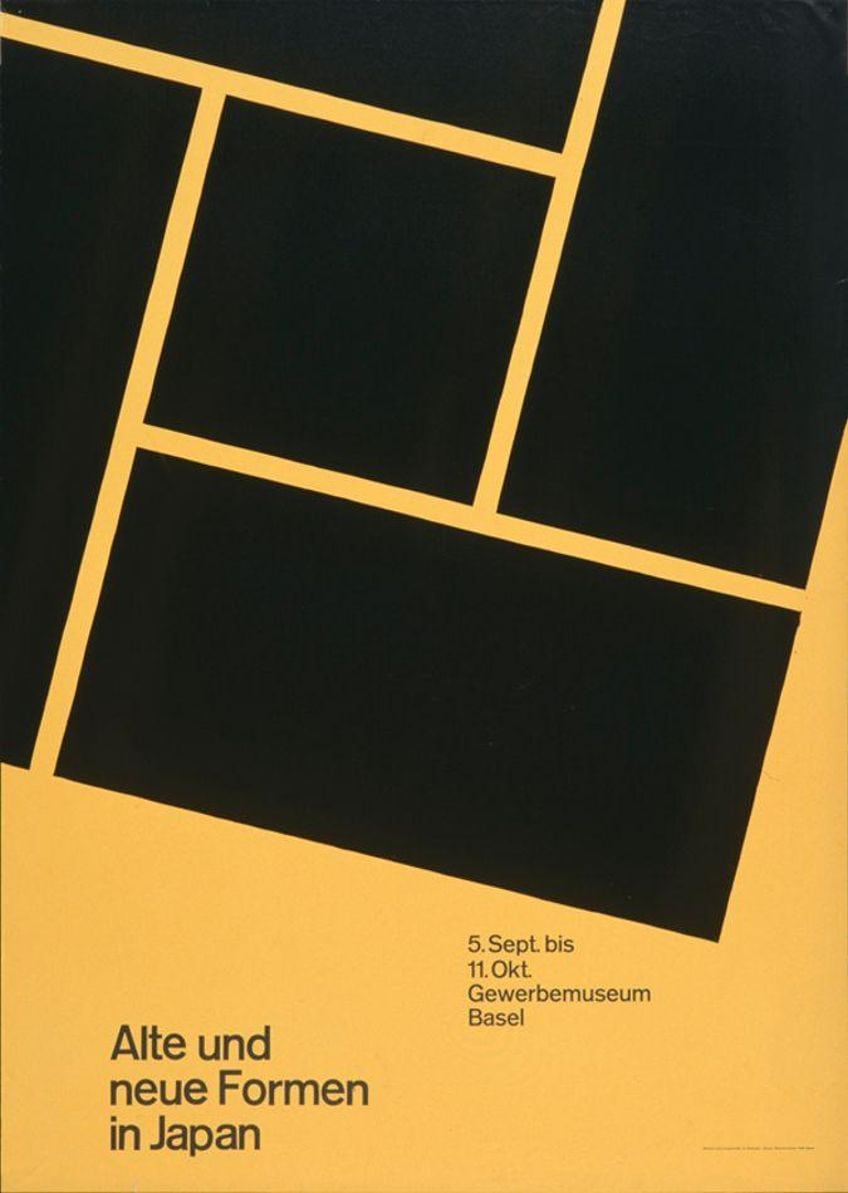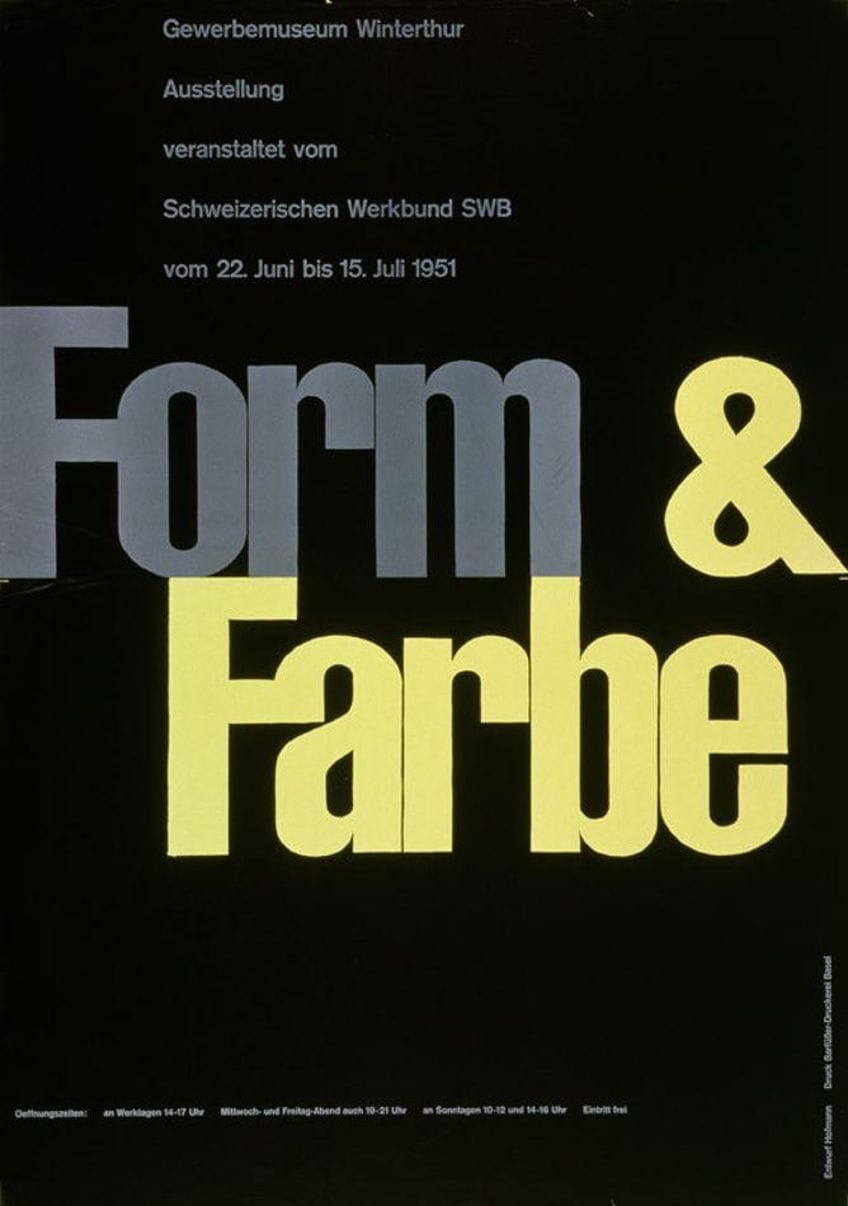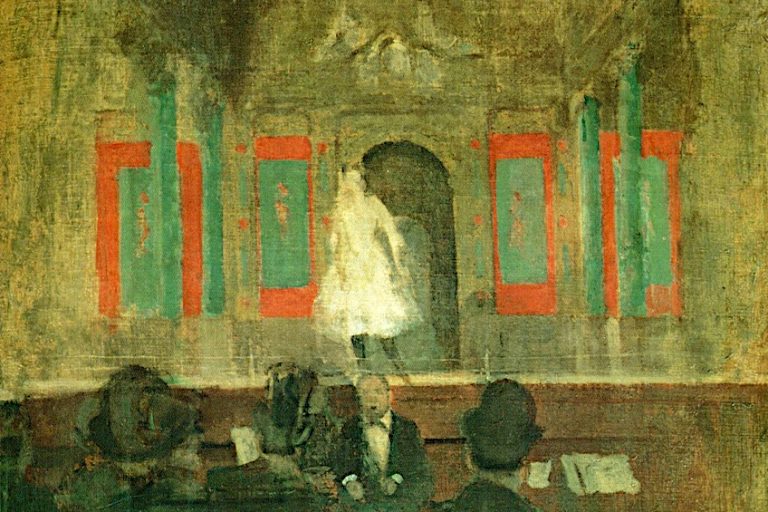Armin Hofmann – A Master of Swiss Graphic Design
Armin Hofmann, a Swiss graphic designer born in 1920, stands as a luminary in the world of modern graphic design. Renowned for his minimalist yet impactful approach, Hofmann’s work embodies the principles of Swiss design—clarity, simplicity, and functionality. His influential teachings at the Basel School of Design shaped generations of designers, emphasizing the importance of typography, grid systems, and visual hierarchy. Through his innovative posters, logos, and educational contributions, Hofmann’s legacy continues to inspire and define the essence of timeless design aesthetics.
Table of Contents
Key Takeaways
- Armin Hofmann was a pivotal figure in Swiss graphic design, emphasizing clarity and simplicity.
- His teaching at the Basel School of Design significantly impacted design education and methodologies.
- Hofmann’s legacy is evidenced by his timeless work and the enduring principles he advocated in design.
Early Life and Education
| Birth | June 29, 1920 |
| Death | December 18, 2020 |
| Place of Birth | Winterthur, Switzerland |
| Genre of Work | Graphic design, typography, and design education |
Armin Hofmann was a Swiss graphic designer whose work transformed the visual landscape of the mid-twentieth century. Born in 1920, he became a seminal figure in the development of the Swiss Style of graphic design, a style characterized by its clarity, simplicity, and adherence to typographic fundamentals. Hofmann’s approach to design was methodical and theoretical, which he imparted to his students during his tenure at the Basel School of Design. His influence has reached far beyond Switzerland, shaping the way graphic design is practiced and taught globally.

His professional career began in 1947 when he started teaching at the Allgemeine Gewerbeschule Basel School of Art and Crafts. Hofmann’s contribution to design education was profound, emphasizing the importance of practical experience combined with a deep understanding of design principles. He constructed a body of work that is celebrated for its timeless quality, encompassing posters, visual identities, and sign systems. His teaching methods and philosophy regarding design continue to resonate with students and designers alike, underscoring the relevance of his work and the principles that underpin it. Through his longevity and profound impact on the field, Hofmann lived to be 100 years old, leaving behind a legacy of innovation and excellence in graphic design. He is remembered not just for the aesthetics of his work but for the rigor and discipline he brought to design as a craft.
Hofmann’s role in shaping modern graphic design is indelible, and his influence is seen in the clarity and functional beauty of visual communication today.
Influence of Emil Ruder
It was a chance encounter with Emil Ruder on a train that played a pivotal role in Hofmann’s career. Ruder informed him about an opportunity to teach at the Basel School of Design, which Hofmann would later accept.
Studies at Basel School of Arts and Crafts
Hofmann joined the School of Arts and Crafts in Zurich in 1937. Here, he was under the direct influence of leading Swiss designers and honed his skills that would establish his foundational design philosophy.

Early Career
Upon completion of his studies, Hofmann started working as a lithographer in Basel and Bern. These experiences in lithography influenced his detail-oriented approach to design.
Late Career and Death
Hofmann’s career extended beyond his early years as he continued to teach and influence design education worldwide. Armin Hofmann passed away on December 18, 2020.
His legacy endures in the principles he instilled in modern graphic design.
Principles of Design
Armin Hofmann’s pivotal work in graphic design is particularly lauded for its cohesive utilization of fundamental elements such as typography, simplicity, line, shape, and color. These principles are systematically expounded in his influential book, “Graphic Design Manual: Principles and Practice.”

Typography and Simplicity
Hofmann’s approach to typography is marked by a robust simplicity. He believed that clear communication was essential and accomplished this through meticulous selection and placement of type. An advocate of the International Typographic Style, he guided the use of sans-serif fonts, with an emphasis on readability and an orderly arrangement of text blocks to ensure legibility.
Key typographic considerations included:
- Font choice should prioritize clarity and function
- Alignment and spacing enhance the ease of reading
Point, Line, and Shape
In Hofmann’s design philosophy, the point, line, and shape are the foundational building blocks of visual design. Each element serves a distinct purpose:
- Point: An essential mark depicting a position in space.
- Line: A connection between points, steering the viewer’s eye and creating boundaries.
- Shape: The combination of points and lines forming a visual entity; shapes can be geometric or organic, but always fundamental to a design’s structure.
Hofmann included these elements to shape the grammar of graphic design, essential for creating meaning and directing visual flow.

Color and Composition
Hofmann meticulously integrated color with composition to influence mood and hierarchy. His work exhibits a disciplined use of color, often minimal, to prevent distraction from the message. In composition, elements are purposefully arranged to create balance and dynamic interaction.
- Effective use of color: Minimal color palette for clarity and focus, and strategic contrast to guide the viewer’s attention.
- Principles of composition: Balance and alignment enhance stability, and contrast and space contribute to a design’s rhythm and can guide the interpretation.
Hofmann’s principles continue to serve as a cornerstone of sound design practices, influencing educators and designers to date.
Professional Career and Teaching
Armin Hofmann’s professional career was emblematic of excellence in graphic design, marked by his foundational role at the Basel School of Design and his contributions to the International Typographic Style. His teaching methodologies left a significant impact on graphic design education, particularly during his tenure at Yale University.

Work at Basel School of Design
Hofmann began his influential teaching career at the Basel School of Design in 1947, where he profoundly shaped the Graphic Design Department.
At the relatively young age of 26, he took on the mantle of leadership in the department.
- Years active: 1947 – 1986
- Focus: Grounding students in the fundamentals of graphic design, typography, and composition.
- Teaching methods: His pedagogy emphasized a rigorous approach to visual design, a systematic process grounded in Swiss design principles.
- Outcome: Produced numerous acclaimed graphic designers and educators who continued to propagate his teachings.
Involvement in International Typographic Style
Hofmann was a pivotal figure in the development of the International Typographic Style, also known as Swiss Style. His graphic work, celebrated for its clarity and typographic hierarchy, contributed to this movement’s global influence.
- Contributions: Posters, visual identities, and printed materials that exemplify the characteristics of the International Typographic Style.
- Characteristics: Focused on simplicity, legibility, and objectivity in design.

Teaching at Yale University
Hofmann extended his pedagogical reach beyond Switzerland when he accepted a position at Yale University.
- Position: Visiting critiquer at the Yale School of Art.
- Impact: Introduced a curriculum that reflected his Swiss design ideology and teaching methods to American students.
By integrating his Swiss design principles with the educational values of the institutions he served, Hofmann left an indelible mark on the field of graphic design.
His artful blend of professional practice and education contributed to the lasting legacy of his work and teachings.
Legacy and Impact
Armin Hofmann’s contributions to graphic design have established him as a pivotal figure in both design history and education. His work is renowned for its clarity, simplicity, and adherence to the principles of the Swiss Style.

Publications and Exhibitions
Hofmann’s pedagogy and design philosophy were encapsulated in his seminal book, Graphic Design Manual: Principles and Practice. This work has been influential in the field of design education. His expertise and influence have been acknowledged through various exhibitions, including showcases of his work at prestigious institutions such as the New York Museum of Modern Art and the Cooper Hewitt, Smithsonian Design Museum.
Influence on Swiss Graphic Design
As a leading master of Swiss Graphic Design, Hoffmann shaped the movement known as the Swiss Style or International Typographic Style. His designs utilized grid systems, clean sans-serif typefaces, and a rigorously logical composition, which became hallmarks of Swiss design during the mid-20th century.
He began imparting his knowledge at the Allgemeine Gewerbeschule Basel School of Art and Crafts in 1947, influencing generations of designers.
Legacy of Armin Hofmann Today
Even after his passing in 2020, Hofmann’s legacy lives on. His approach to design—as a craft grounded in function, clarity, and reduced graphic form—continues to impact contemporary design. The principles he advocated for are still taught across design schools worldwide, solidifying his place in ongoing design discourse and practice.

Armin Hofmann’s enduring influence on the world of graphic design is undeniable, leaving an indelible mark on the discipline that reverberates to this day. His dedication to clarity, simplicity, and functionality has not only defined Swiss design but also transcended borders, shaping the global visual language. Hofmann’s legacy extends beyond his iconic works to the countless designers he mentored, whose own contributions continue to echo his principles. As we reflect on his profound impact, it’s clear that Armin Hofmann’s artistic vision and pedagogical legacy remain timeless inspirations for the ever-evolving field of graphic design.
Frequently Asked Questions
Which Works Are Considered the Most Iconic by Armin Hofmann?
The most iconic works by Armin Hofmann include his posters, which exemplify Swiss design principles. His 1959 poster for the Basel Stadt Theater and his series for the Morat Institute of Art and Art Science are pivotal examples of his mastery in graphic design.
How Did Armin Hofmann Influence the Swiss Style of Graphic Design?
Armin Hofmann played a seminal role in the development of the Swiss Style of graphic design through his teaching at the Allgemeine Gewerbeschule Basel and his design practice. He emphasized simplicity, legibility, and objectivity in design, which are hallmarks of the Swiss Style.
What Are the Defining Characteristics of Armin Hofmann’s Design Style?
Armin Hofmann’s design style is defined by its minimalistic approach, focusing on clarity of communication through geometric forms, clean sans-serif typefaces, and a strict adherence to grid systems. His work often employs a limited color palette to enhance visual impact.
What Typographic Contributions Did Armin Hofmann Make to Graphic Design?
Armin Hofmann made significant typographic contributions to graphic design with his emphasis on typeface legibility and composition. He advocated for the use of sans-serif typefaces, fostering the adoption of typefaces like Helvetica and Univers in the process of design.
Isabella studied at the University of Cape Town in South Africa and graduated with a Bachelor of Arts majoring in English Literature & Language and Psychology. Throughout her undergraduate years, she took Art History as an additional subject and absolutely loved it. Building on from her art history knowledge that began in high school, art has always been a particular area of fascination for her. From learning about artworks previously unknown to her, or sharpening her existing understanding of specific works, the ability to continue learning within this interesting sphere excites her greatly.
Her focal points of interest in art history encompass profiling specific artists and art movements, as it is these areas where she is able to really dig deep into the rich narrative of the art world. Additionally, she particularly enjoys exploring the different artistic styles of the 20th century, as well as the important impact that female artists have had on the development of art history.
Learn more about Isabella Meyer and the Art in Context Team.
Cite this Article
Isabella, Meyer, “Armin Hofmann – A Master of Swiss Graphic Design.” Art in Context. May 6, 2024. URL: https://artincontext.org/armin-hofmann/
Meyer, I. (2024, 6 May). Armin Hofmann – A Master of Swiss Graphic Design. Art in Context. https://artincontext.org/armin-hofmann/
Meyer, Isabella. “Armin Hofmann – A Master of Swiss Graphic Design.” Art in Context, May 6, 2024. https://artincontext.org/armin-hofmann/.











